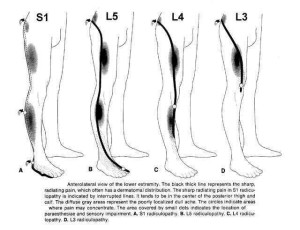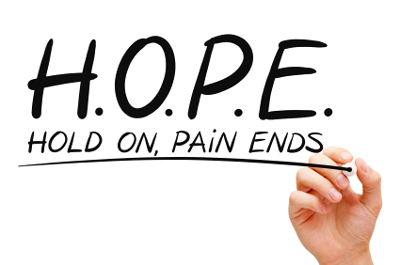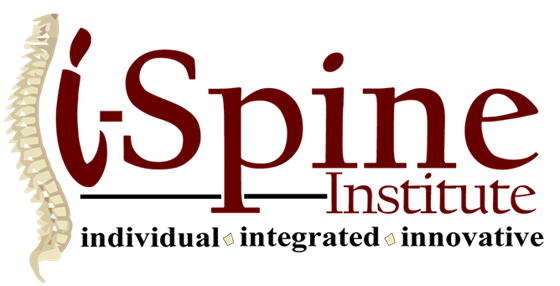Symptoms Checker

Back pain symptoms that you may be experiencing provide important information that helps back pain specialists to accurately diagnose and treat severe back pain.
Common Back Pain Symptoms
- sharp, shooting, or radiating pain in the spinal cord, lower back, or down the leg
- numbness and tingling in the lower back or any extremities
- tightness or aching sensations in the muscles
In some cases, people experiencing back pain may also lose control of their fine motor skills and coordination.
Neck and back pain can hinder many of your daily activities, but by diagnosing your pain, we can determine what treatments you may need to get back to feeling better.
Whether you suffer from acute back or neck pain or your pain is more severe and chronic, describing your back pain symptoms to a doctor can help to diagnose, treat and alleviate severe back pain.
Sciatica
While sciatica is most commonly the result of a herniated disc in the lower back, any inflammation or unusual pressure on the sciatic nerve could be a culprit.
Typical Symptoms of Sciatica
- a burning sensation
- a tingling sensation from the lower back throughout the entire leg
- numbness of the leg
If these symptoms become persistent, it is important to have them addressed early on. At i-Spine, our group of back specialists meticulously examine the patient in order to properly diagnose and treat sciatica. Typically, a well-developed treatment plan will allow the patient to heal without resorting to invasive surgery.
What is Sciatica?
Sciatica is a form of radiculopathy, which simply means that one or more nerves along the spine are being negatively affected in some way and thus not working properly.
The term sciatica refers specifically to lower back pain which can include pain down the leg that is caused by the compression or irritation of spinal nerve roots that are connected to the sciatic nerve, or compression or irritation of the sciatic nerve itself.
The sciatic nerve is actually the longest and widest nerve in the entire human body; it begins in the lower back area and runs through the buttock and down the lower limbs. This is why sciatica, or the pain felt as a result of radiculopathy, can be present in the lower back as well as the legs and feet. In addition to pain, those with sciatica may experience difficulty of motion, numbness and a burning or tingling feeling throughout the lower limbs including the feet and toes. 
What Causes Sciatica?
It is important to reinforce the fact that sciatica refers to the type of pain felt, and not the cause of that pain. Sciatica is most often caused by a herniated disc (also referred to as a slipped disc, bulging disc, ruptured disc, protruding disc or pinched nerve) which presses on the sciatic nerve roots.
A normal disc consists of a hard outer wall with a jelly-like center that can push out or “rupture” through the outer wall, forming a “bulge”. This can happen because of injury, but more often is due to general wear over time. The ruptured disc material can irritate the sciatic nerve and cause the pain felt in sciatica. (This is true of lumbar herniated discs; cervical herniated discs on the other hand may cause head and neck pain, as well as arm pain.)
Sciatica can also be felt due to spinal stenosis, a condition in which the spinal canal becomes narrowed and thereby compresses the spinal cord and sciatic nerve roots. This can be caused by herniated discs, spondylolisthesis (a condition where vertebrae slip forward or backward, distorting the spinal canal) or by simple inflammation. There are many other causes of sciatica that can include pregnancy, scar tissue and muscle strain so it is important to determine the direct cause of the pain in order to diagnose one’s condition and provide proper treatment.
What Treatments are used for Sciatica?
Treatments for sciatica include anti-inflammatory medications in addition to epidural steroid injections that deliver medicine into the space between the disc, spinal cord and spinal nerve.
The needle is directed into the epidural space using x-ray imaging whereby a small amount of dye is injected to confirm the placement of the needle. A combination of steroids and local anesthetic is injected directly into the painful area providing relief and allowing the patient to regain movement that may have been lost due to pain as well.
This is especially important as it will allow a patient to perform the back exercises and physical therapy which may also be prescribed to help further alleviate pain and reduce the incidence of future episodes of sciatica.
Neck Pain
Severe neck pain is often debilitating. Targeting the source of pain in the neck requires careful examination.
Neck pain often results from damage to the muscles, ligaments, joints, or vertebrae in the upper spine and is a common symptom of back pain. Severe neck and back pain is one of the leading reasons why people visit their primary care doctor each year. There are seven bones that make up the cervical vertebrae. Between and surrounding the spinal column are important stabilizing tissues such as discs, muscles, and ligaments. Disease and conditions can affect any of these tissues triggering neck pain. By reviewing the history of the symptoms, along with further examination our physiatry specialists will develop a treatment plan to provide pain relief for your neck pain.
Lower Back Pain
Lower Back Pain
Lower back pain is a common problem often caused by overusing or misusing the muscles in the back, degeneration due to aging, or other back conditions. At i-Spine, we understand the discomfort and inconvenience of lower back pain. Simple daily movements like flexing, extending, and rotating the body become difficult and create severe tenderness. Our group of specialists can diagnose and target your source of pain with effective treatments in order to help you get back to a pain free lifestyle.
Severe Lower Back Pain
The symptoms of lower back pain will often improve over a short period of time with conservative treatments as simple as over-the-counter anti-inflammatory medications and hot and cold therapy using ice and heat packs. If the pain persists for more than 12 weeks, however, it is considered to be chronic pain, and may require specialized treatments in order to improve. Chronic pain can be attributed to injury or simply the degeneration of the spine due to aging.
Diagnosing and Treating Low Back Pains
There are many disorders that can cause lower back pain including the narrowing of the spinal canal, pinched nerve roots, and even damage to the sacroiliac joints where the spine meets the pelvic bones. Thus, it is extremely important to first locate the source of the lower back pain in order to determine the best treatment option. With an extensive knowledge of the anatomy of the spine, we can often locate the source of pain through a physical examination of the body and its movement, but an MRI or an EMG may be performed to confirm a suspected diagnosis. Even with the vast causes of lower back pain, surgery is rarely necessary as less invasive non-surgical treatment options can often provide relief and help patients return to their normal physical level of functioning. These back pain treatments include spinal injections whereby a strong anti-inflammatory medication and a local anesthetic medication are injected into different areas of the spine, depending on the source of the pain.
Pain Down the Leg
Pain Down the Leg
Pain down the leg is often triggered by a pinched nerve in the lumbar region of the back. Nerves run throughout the entire body, so when a nerve is pinched, compressed, or damaged in one area of the body, uncomfortable sensations may arise elsewhere. We often treat pinched nerves associated with:
- athletic activities
- injuries on the job
- motor vehicle accidents
- degenerative disease
By identifying the location of your pain, our specialists can apply a highly specific treatment to help you progress toward a speedy recovery.
Tingling in Feet and Potential Lumbar Radiculopathy
Pain down the leg, tingling in the feet, and/or toe numbness is often connected with chronic back pain. Lumbar radiculopathy, also known as Sciatica, is a common diagnosis for this pain down the leg. Other possible disorders include a herniated disc, degenerative disc disease, and spinal stenosis. All of these symptoms arise when a lumbar nerve root is pinched or pushed. Damage at each lumbar level of the spine targets specific areas of the lower body. By seeing a specialist, you will given options to help treat your individual condition with special care.
Numbing of Toes and Potential Lumbar Radiculopathy
If a person begins to complain of pain down the leg and/ or numbing toes, this may be caused by compression of one of the spinal nerves. Although the toes are very far from the spinal area, nerves stretch the length of the body, directly connecting to the toes. It is important to address these sensations quickly. If left untreated, a person could potentially have long-term loss of sensation in the legs and toes. Causes of numbing in the toes can be similar to the causes of pain down the leg. Bulging or herniated discs, as well as degenerative bone spurs around the vertebral bones create direct pressure on the nerve roots and such nerve irritation is known as lumbar radiculopathy. If you are experiencing these conditions it is important to seek specialized care.
Arm Pain
Arm Pain
The discomfort associated with arm pain is not always related to an arm injury. Spinal disorders or injuries in the upper back can create this pain.
The brachial plexus, the group of nerves located in the neck and shoulder, carry signals between one’s spinal cord and arms. If these nerves are pinched, compressed, or otherwise damaged, painful sensations can arise. Peachtree Spine’s neck and back specialists can diagnose and treat arm pain associated with a back or neck disorder or a potential injury. Through careful examination and a unique treatment plan, our team of physiatrists will help you return to a pain-free lifestyle without invasive procedures.
Tingles in Hands: Possible Sign of Spine-Related Disorders
If you are experiencing arm pain or a tingling sensation radiating from your neck down your arm, do not discount the pain as an isolated occurrence. Your pain should be evaluated by a professional to ensure that there is not an underlying condition requiring medical attention. Your arm pain could be related to serious back and neck disorders such as spinal stenosis or herniated discs. If you have tried physical therapy or visited a chiropractor in hopes of healing your chronic arm pain and have not experienced relief, a board certified physiatrist may be able to identify and perform back surgery alternatives to restore full physical function to any affected parts of your body. Our physiatrists may be able to diagnose the cause of your arm pain and/or tingling right away, or they may wish to run a scan or series of scans to detect the specific source of your pain. After assessing the extent of your injury or disorder, you can trust one of our doctors to suggest the most appropriate option from our array of back pain treatments to manage or eradicate your arm pain.

Schedule an Appointment

